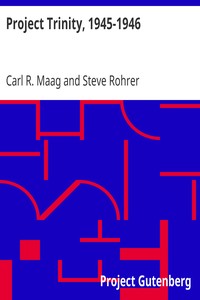| Summary |
"Project Trinity, 1945-1946" by Carl R. Maag and Steve Rohrer is a historical account detailing the first atmospheric nuclear weapons test conducted by the United States during the late 1940s. This book outlines the efforts surrounding Project Trinity, specifically documenting the activities, participants, and safety measures taken during the test conducted at the Alamogordo Bombing Range in New Mexico on July 16, 1945. The content revolves around the scientific advancements and military coordination that defined this crucial moment in nuclear history. The book elaborates on various aspects of Project Trinity, starting with the preparation and organization of personnel, which included approximately 1,000 military and civilian participants. It describes the pre-shot activities leading up to the detonation, the actual event, and the post-detonation monitoring for radiation exposure. Notable figures such as Dr. J. Robert Oppenheimer and Major General Leslie Groves are mentioned, as well as the implementation of rigorous radiation safety protocols. The report highlights the scientific and diagnostic experiments conducted to assess the effects of the nuclear detonation, alongside dosimetry data detailing the radiation exposures received by the participants, thus encapsulating the complexity and significance of the project in the broader context of nuclear weapon development. (This is an automatically generated summary.)
|

